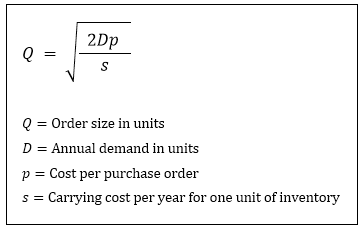The economic order quantity can be calculated using the following formula:

Which of the following describes how the optimal order size will change if the annual demand increases by 36 percent?
The economic order quantity can be calculated using the following formula:

Which of the following describes how the optimal order size will change if the annual demand increases by 36 percent?
The optimal order size (Economic Order Quantity) is calculated using the formula Q = √(2Dp / s), where D is the annual demand. If the annual demand (D) increases by 36 percent, the impact on the order size (Q) can be determined by understanding that the relationship between Q and D is Q ∝ √D. A 36 percent increase in D means D is multiplied by 1.36. Therefore, Q becomes √(1.36D), which simplifies to √1.36 * √D. The square root of 1.36 is approximately 1.17, meaning the order size Q will increase by approximately 17 percent.
square root of 1.36 equals almost 1.17
smart approach
how can I get the number?
First you put in dummy numbers for the variable cost of order, the carrying cost per unit per period and for the annual demand. Calculate the EOQ. Then do a second calculation with the same numbers but this time increase your annual demand by 36%. That will give you a new EOQ. Compare the first EOQ with the second EOQ and the percentage change between them will give you the answer